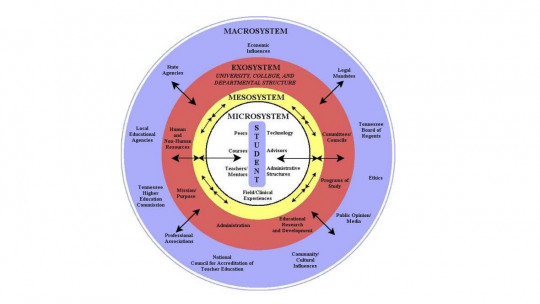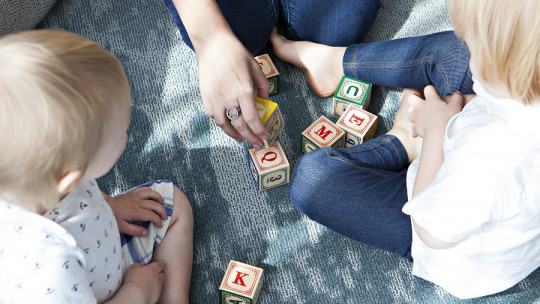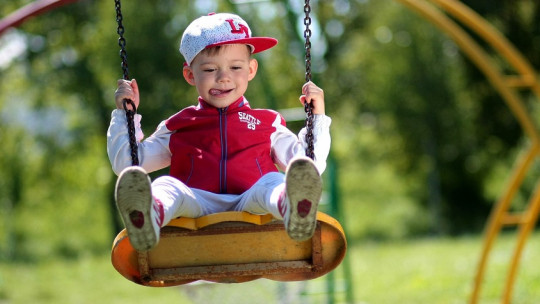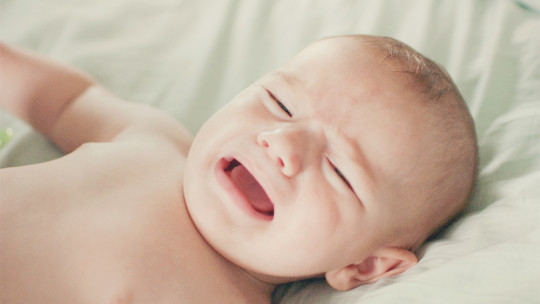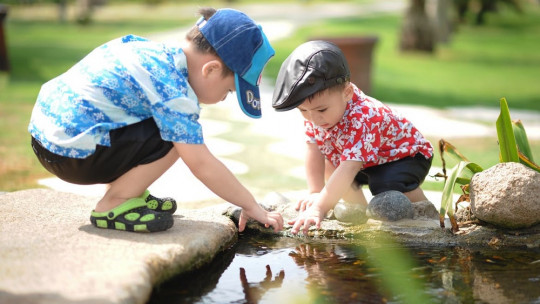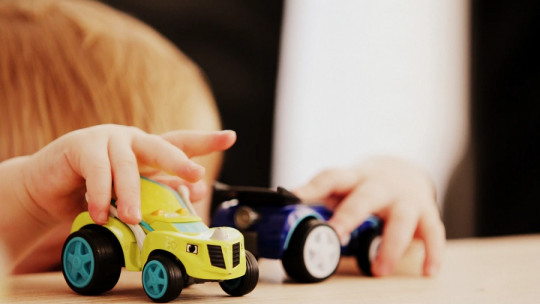
The concept of personality development It can be described as the vital process that every individual goes through where certain bases and guidelines of character and behavior are established from which the traits, values and ways of functioning organized and stable over time of said person are formed.
These mechanisms become a reference for the person in his interactions with the context (environmental or physical and interpersonal or social) in which one usually operates.
personality factors
Thus, development is understood as the result of the bidirectional confluence between more biological or internal factors (genetic inheritance) and other contextual or external factors (environment). The first includes temperament which is defined by an intrinsic and innate emotional and motivational disposition that mobilizes the subject for primary interests.
On the other hand, environmental factors can be classified into common influences (externally originated norms, values, social and cultural beliefs) and personal influences (particular life experiences and circumstances of each subject, such as an illness).
It can be said, therefore, that as the subject matures biologically and incorporates new experiences and external experiences, the process of developing one’s own personality takes place. How does this personality development occur during childhood?
emotional development in early childhood
The most important phenomenon that characterizes the affective development of the boy or girl in the first years of life is the formation of the attachment or emotional/affective bond established between the child and one or several reference figures (usually subjects belonging to the family system, although it may not be in all cases). Attachment is made up of three elements: attachment behaviors, mental representations and feelings generated from the previous two
The main function of developing the emotional bond is both facilitate adaptive development in the emotional area which allows the subject to establish future functional and appropriate emotional interpersonal relationships, such as ensure balanced overall personality development Without this support, children are not able to establish the emotional bonds necessary to develop all their skills.
At the same time, attachment generates a context in which children can learn and explore their environment feeling safe, which is essential to discover their own capabilities. These kinds of discoveries will shape their attitudes and a part of their personality, depending on whether they feel more or less competent in the areas in which they normally live.
The process of attachment formation
In the process of attachment formation, we can distinguish several phases depending on the distinction that the baby learns to make about the people in his social environment Thus, in the first two months, his inability to discriminate between attachment figures and other people motivates him to feel a good predisposition for social interaction in general, regardless of the person in question.
After 6 months, this differentiation becomes more pronounced, so that the boy or girl shows his preference for the closest figures of emotional proximity. At 8 months the “eighth month distress” phase takes place in which the baby shows his rejection of strangers or people who are not part of his closest circle of attachment.
With the consolidation of the symbolic function, at 2 years of age, one is able to internalize the permanence of the object, even though it is not physically visible, which makes it possible to consolidate the emotional bond. Later, the child begins a stage characterized by a constant search for adult approval and affection experiencing a certain emotional dependence and again showing a good predisposition for general social interaction.
Finally, between 4 and 6 years old, the child’s interest focuses on his or her relationship with peers, which strengthens the beginning of the socialization stage in environments other than the family, such as school.
The conquest of autonomy
The acquisition of the capacity for autonomy takes place in the first years of the child’s childhood, once the process of self-concept has begun to be consolidated (as differentiation from other subjects) and adult emotional dependency begins to be overcome to orient themselves to experimenting with the world independently.
By discovering that they can interact following the first notions of norms, values and internalized beliefs (not always coinciding with that of adults understood as a learning model) from early life experiences, Their motivation is aimed at governing their behavior based on their own decisions Thus, a phase of constant ambivalence is generated between the need to depend on the adult and the search for autonomy with respect to him, which can lead to tantrums or other behavioral alterations as a sign of the intention to preserve their independence.
This is a delicate process, since in addition to the fact that the child can be very difficult to handle, it requires that the adult set strict and clear educational guidelines on the appropriate developmental path to take. This is one of the fundamental ideas to highlight in relation to the development of the boy or girl’s autonomy.
It is important to remember that there must be that balance between the increasingly broad freedom of action that the child adopts and the permanent role of guide and guidance that the attachment and educational figures that the former has must carry out.
Another fundamental point lies in the relevance of the environmental context in which the individual develops, which considerably shapes and influences the process of acquiring the indicated autonomy. Therefore, each individual has their particularities and A universal pattern cannot be established that explains this process in a general way Like most aspects related to the development of the person, it is characterized by its individuality and qualitative differentiation with respect to other subjects.
Self-awareness, self-esteem and child self-worth
The beginning of the acquisition of self-awareness or self-concept is intrinsically related to the achievement of the object permanence phase of cognitive development. The child internalizes that he remains the same being at different times or situations thanks to the linguistic proliferation and development that occurs from the second year of life. From that moment on, the subject begins to see himself as being different from other individuals and recognize your own ideas, values, beliefs, feelings, interests and motivations. That is to say, he begins to relate the environment in which he is situated with his self.
This is a process that begins at this chronological moment; Therefore, this differentiation and establishment of individual identity is not complete at all times and despite the fact that the aspects that are inherent to their person (personality) are assimilated, it is possible that some cognitive and/or emotional processes occur in a different way. unconscious.
Thus, it is a process by which what others express and what one interprets from their actions forms an image of oneself. In turn, this image is associated with a moral evaluation of it, which makes it more or less positive. depending on the expectations and preferences of the boy or girl
The role of self-esteem in boys and girls
With the appearance of the self-concept, its evaluative component, self-esteem, arises simultaneously. Self-esteem is a phenomenon that is very closely linked to the achievement of balanced and adaptive psychological development. Therefore, if the evaluation that the individual makes of his or her own value as a human being in interaction with the more cognitive aspects and qualities related to self-concept is positive, This fact will act as a protective factor in the future in preventing intense emotional disturbances difficulties at a psychological level and, to a greater extent, problems in social interaction with other people.
It is very relevant that there is not a very high discrepancy between the real self (what the individual represents) and the ideal self (what the individual would like to represent) to consolidate an adaptive and adequate or balanced psychic and emotional development).
Another fundamental aspect is the role that external evaluations play on the level of self-esteem that each subject presents. So, the image that others have of oneself and the assessment they make of their skills or behaviors They significantly influence the child’s perception of himself.
From the third or fourth year onwards, the search for approval from the adult would be related to this issue, since this motivation It is carried out with the ultimate goal of establishing an acceptable level of self-esteem As mentioned above, at this stage conflicts may arise, at the level of the child’s oppositional behavior towards educational figures and other adults, derived from the contrast between the adult’s protection and the child’s search for autonomy. Therefore, a fundamental aspect to take into account is the educational style that the parents exercise on the child.
An educational style characterized by a balanced combination of control/discipline/authority and affection/understanding seems to foster a high level of self-esteem and, in addition, a lower probability of tantrums and oppositional behavior. This way, It is essential that educators understand the importance of the child’s progressive increase in autonomy and that as his maturation as a human being takes place, the exhaustive control of all those decisions related to the child must be gradually reduced.
Are personality, character and temperament equivalent?
Although these three terms have been used in an undifferentiated manner, the truth is that they are not conceptual equivalents. The definition of personality as a disposition or set of stable and permanent traits that guide behavior, reasoning and emotional expression in a generic way, would encompass both the concept of temperament and character.
That is Both temperament and character are elements that form personality by interacting together They cannot be isolated individually, but they help to understand our behavior patterns globally and in all areas of life.
Temperament refers to the innate emotional and motivational predisposition whose manifestations are due to a more primitive biological or hereditary origin. It’s a phenomenon considerably stable over time and is subject to a lesser extent to ethnic or cultural interference On the contrary, character, of a more cognitive and intentional nature, derives from environmental and cultural influence and is the product of external life experiences.

